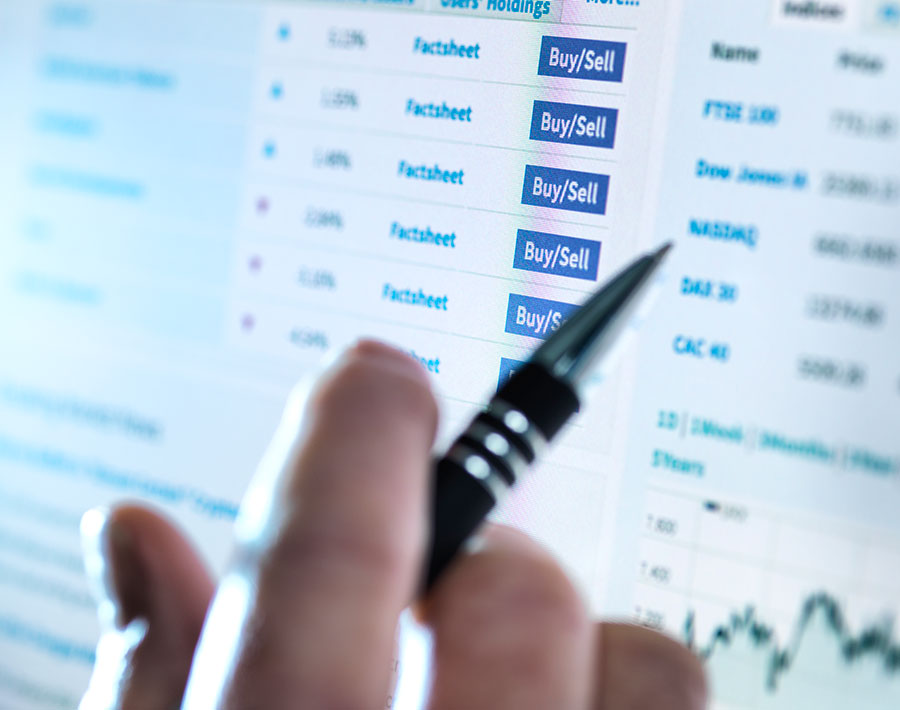Stock Market: Cornerstone Stocks That Are Likely to Hold Their Value During the Crisis

Financial expert Gordon Pape says he doesn't expect a true recovery to begin much before the latter part of the fourth quarter or the first quarter of 2021. Photo: Westend61/Getty Images
The recent rally in stocks is mystifying. If it holds, this is going be the shortest bear market in history.
I don’t think that’s likely. Historically, markets look ahead 3-6 months, and that’s reflected in the prices. But what is the world going to look like by the fall? Based on what medical experts are telling us, we will still not have a coronavirus vaccine, although we may be getting close.
Without a vaccine, a major economic recovery is highly unlikely. That means the scenario for the next year or so is likely to be similar to the one we’re experiencing now. Unemployment will be high, corporate profits will be suppressed, global supply chains will be strained, demand for oil will remain low, money for new capital expenditures will be scarce, and many people will need government help to survive.
That’s not a recipe for a bull market. I think once investors realize how long and difficult the road back is going to be, we’ll see a new downturn that will test the March lows. I don’t expect a true recovery to begin much before the latter part of the fourth quarter or the first quarter of 2021.
I’m not suggesting you should avoid stocks during this period. But they must be carefully chosen. I would not invest in broad market indexes at this point.
Rather, look for stocks that are likely to at least hold their value during this crisis and will emerge in a stronger position when it’s over. I call these Cornerstone Stocks. They offer products or services that are in high demand (many are essential services), have a sound balance sheet, and pay a sustainable dividend.
Here are five Cornerstone Stocks I believe are worth considering at this time.
Precious Metals
Franco-Nevada (TSX, NYSE: FNV). Gold has always been a safe haven investment and it looks even more attractive now as the U.S. Federal Reserve Board has become a money-printing machine, weakening the U.S. dollar. I like this stock because it’s a royalty company – it doesn’t have to carry the cost of finding, developing, and operating new mines. The shares are up 43 per cent so far this year.
Retailers
Walmart (NYSE: WMT). Many companies are suffering during this downturn, laying off millions of workers in the process. Walmart is not one of them. Sales are booming – The Wall Street Journal reported last week they were up 20 per cent year-over-year in March. As a result, the company is hiring, big time. The retailer has added 150,000 new jobs and plans to hire another 50,000, although these positions will be mainly temporary. The stock pays a quarterly dividend of US$0.54 (US$2.16 a year), to yield 1.7 per cent.
Costco (NDQ: COST). Costco is another retailer that’s doing well. March sales were up 11.7 per cent year-over-year, although the numbers going forward may not be as impressive due to new social distancing rules at its stores. The company showed confidence by raising its quarterly dividend by 7.7 per cent to US$0.70, effective with the May 15 payment.
Telecoms
AT&T (NYSE: T). Communications companies may suffer some revenue declines this year, but these are solid businesses with steady cash flow. AT&T’s CEO has stated the company has a strong balance sheet and is committed to fulfilling its dividend obligations. Despite that, the shares are trading below US$30. With a $2.08 annual payout, that works out to a yield of better than 7 per cent.
BCE Inc. (TSX, NYSE: BCE). BCE has not made any commitment to maintain its dividend that I know of and first-quarter results aren’t due until May 7. As with AT&T, sales and earnings may be below expectations, but I don’t expect anything extraordinary. With a yield of 5.9 per cent, this is a core stock to hold through the crisis and beyond.
A word of caution. While these securities should outperform the market in the coming months, prices look expensive at this point, as I noted at the start of this column. If you plan to make any purchases, use dollar-cost averaging. Buy 25 per cent now and increase your position gradually until you reach your target.

Gordon Pape is Editor and Publisher of the Internet Wealth Builder and Income Investor newsletters. For more information and details on how to subscribe, go to www.buildingwealth.ca.
RELATED:
What Will Life and Business Look Like After the COVID-19 Crisis?
Stock Market: How to Re-Balance Your Portfolio Amid the Pandemic Crisis
Where to Invest As We Head Closer to Negative Interest Rates